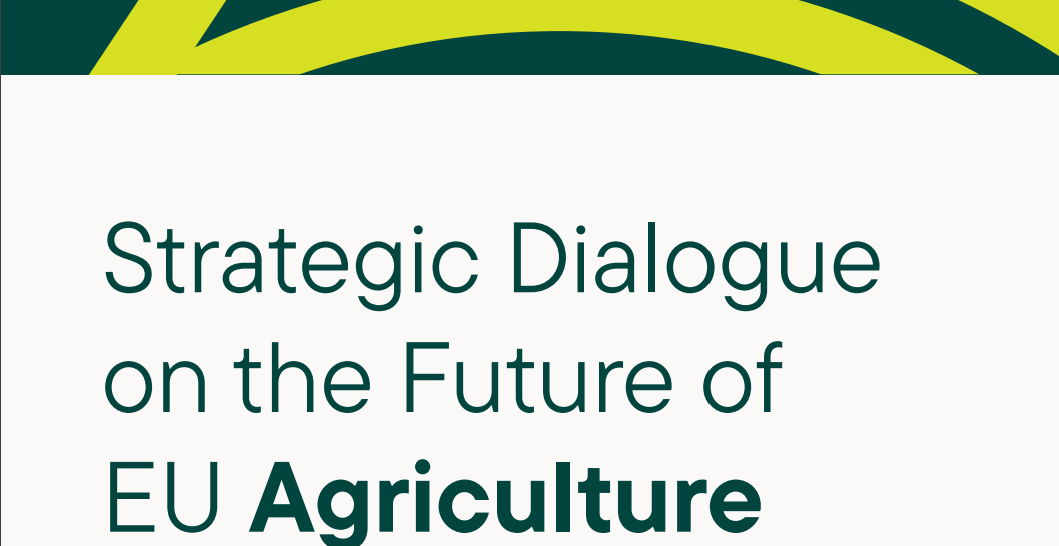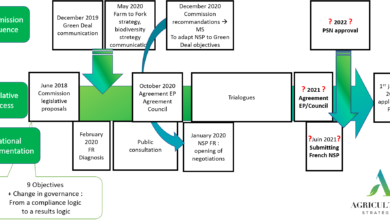
The work of the European Court of Auditors (ECA) is often very informative and the conclusions of their previous reports on decoupled payments and green payments have been particularly critical. While the Commission’s proposal is a continuation of the previous reforms, it is not surprising that the CEC takes up in this new report on the current reform, the assessments of the limited effectiveness of income and of the greening of the 1st pillar. On the other hand, it identifies an objection – perhaps fatal – to the proposal to renationalise the CAP: with regard to the Treaty on the Functioning of the European Union, it is the Commission which must remain responsible for the proper implementation. of the budget, which condemns the strategic plans entrusted to the states, according to the Commission’s proposal. Pending the Commission’s response on this point, it is possible to think that the “new delivery mechanism” at the heart of Commissioner Hogan’s proposal, will never see the light of day, or will be a purely factitious dressing.
The European Court of Auditors (ECA) is an important player in Community reforms. Very involved in the monitoring and evaluation of Community policies, it produces insights that are all the more expected as they are often timely to feed the debate prior to political arbitration. In its new report on the Commission’s proposals on the post-2020 CAP1, it offers an interesting reading, essentially based on the register of the study of the coherence between the political objectives and the means displayed to achieve them.
This note is organized in two parts: the first brings together the elements of judgment that the CEC reiterated in this new report about the inefficiency of decoupled aid to support farmers’ income and the limits of greening to support farmers in the process. environmental transition. The second part deals specifically with the “new delivery mechanism”, whereby the Commission would like to refer to the Member States the responsibility for the implementation of direct aids via national strategic plans.
Do not run two hares at once
The CEC reports on core payments and green payments (in December 2017 and March 2018, respectively) already highlighted a well-known principle in public economics, namely the Tinbergen principle that there should be as much ‘instruments as objectives because wanting to give several objectives to the same instrument is the best way to commit it to failure (for a detailed analysis2).
Thus, in this new report, the Court notes that while the aim is to transfer more responsibilities to the Member States, the Commission proposal largely limits the possibilities as to the types of instruments: “most of the [first pillar will remain distributed in the form of decoupled income support, paid per hectare “. However, for her, “this instrument is not relevant to solving most of the environmental and climate challenges, nor the most effective way to support sustainable agricultural income”. In addition, the CEC reiterates its appreciation of the deterioration in the quality of farm income statistics, and notes that under these conditions “it is difficult to see how the objectives and specific targets [of farmers’ incomes] could be formulated. and followed »3.
A lack of strategic vision for European agriculture
On the environmental side, the CEC considers that the proposal “does not reflect a clear increase in its environmental and climate ambition”. It is, to say the least, reserved when the Commission proposes to count 40% of basic decoupled payments as part of the fight against climate change. Nor does it seem to be excited by the “eco-scheme” which “may be less ambitious than the [second pillar] agri-environment measures”. Above all, on the environmental and climate objectives, she questions the fact that the Commission has not indicated any target to be reached at European level. In these circumstances, the CEC wonders: which benchmarks can the Commission use to judge national choices4?
Recalling some strong data from European agriculture, such as the aging of the agricultural population “for every 100 farmers over 55, the number of farmers under 35 years of age increased from 14 in 2010 to 11 in 2013”, Court wonders what direction the Commission wants to give to European agriculture: “its [Commission] long-term vision for European agriculture (taking into account the long-term trends of technological, climatic, societal changes , demographic, etc.) is not visible.
A proposal contrary to the Treaties?
In addition, the CEC brings in this report new elements on what is presented as the flagship measure of this new reform, the “new delivery model” or new implementation model, which consists of entrusting the Member States with the envelopes budget to be allocated. Above all, it aims to give them the responsibility of achieving the objectives co-defined with the Commission by, if necessary, paying a performance bonus or suspension of appropriations depending on whether or not the objectives are achieved.
While subsidiarity was already strong and States could choose between different options in the distribution of direct aids, it was the Commission that remained responsible for compliance and penalized irregularities that could result in refusals of discharge.
With the new implementation model, the Commission would no longer pay subsidies to the ultimate beneficiaries (mostly farmers) but to the Member States, and it would be the latter who would be held responsible for not achieving the targets. The CEC highlights two important limitations to this new concept: Member States will have a strong incentive not to define indicators and targets for impacts that are too dangerous for them, and the Commission could no longer rely on statistics. payment agencies and the guarantees provided by the certifying bodies. For the CEC “the [reform] proposal is seen as having the impact of weakening the accountability of the Commission”.
However, according to the CEC, the Treaty on the Functioning of the EU (TFEU) in its articles 317-319 establishes that it is indeed the Commission that is responsible for the implementation of the budget. And to conclude “we do not consider the proposed model as a valid performance management system (in English” effective “). One could even add that if the Commission persisted in this way, it would have to set up a parallel tracking system that would undermine the objective of simplification, which is also displayed.
At this stage, there has been no communiqué posted on the Commission’s website. The main reaction of Commissioner Hogan seems to be the interview he gave to the Irish site Agriland where he talks about misunderstanding and misinterpretation on the part of the CEC but does not provide any answers on the new model implementation5. It will therefore be necessary to wait for DG Agri’s reply on the compatibility of this proposal with the European Treaties, but we can still give some credit to the CEC on matters relating to supervision in the use of Community budgetary resources: it’s his main function.
In the end, the CEC report reinforces our view that this reform proposal lacks political ambition, which, under the guise of simplification and renationalisation, is mainly for Commissioner Hogan to find the smallest common denominator. to hope to make a reform before the end of the term of office at the risk of botching it (see our full analysis6).
The renewal, at the beginning of the year, of the derogations to the Nitrates Directive for Ireland and the Netherlands – the latter being suspected of widespread fraud7 – had already given the pulse of Commissioner Hogan’s real environmental ambition. The CEC confirms this, it is a question of seeing in the proposals for reform of the Commission a new operation of greenwashing decoupled aids because the objective is mainly to keep the current orientation of the CAP, even if to accompany the farmers in the environmental transition would mean opting for a more protective CAP for farmers and returning to its ability to guide production systems. Obviously, it will be up to the next Commissioner for Agriculture to start on a different footing to bring about a truly in-depth reform of the CAP.
Frédéric Courleux, Director of studies for Agriculture Stratégies
1 https://www.eca.europa.eu/Lists/ECADocuments/OP18_07/OP18_07_EN.pdf
2 https://www.agriculture-strategies.eu/2018/03/la-cour-des-comptes-europeenne-juge-severement-lefficacite-des-aides-decouplees-et-du-verdissement/
5 https://www.agriland.ie/farming-news/hogan-rebuffs-eu-auditors-cap-reform-evaluation/
6 Voir notre analyse de la proposition de réforme https://www.agriculture-strategies.eu/2018/06/propositions-pac-2020-hogan-propose-le-plus-petit-denominateur-commun-enterrer-la-pac/
7 https://www.ouest-france.fr/economie/agriculture/fraude-massive-des-milliers-de-vaches-fantomes-aux-pays-bas-5551095












